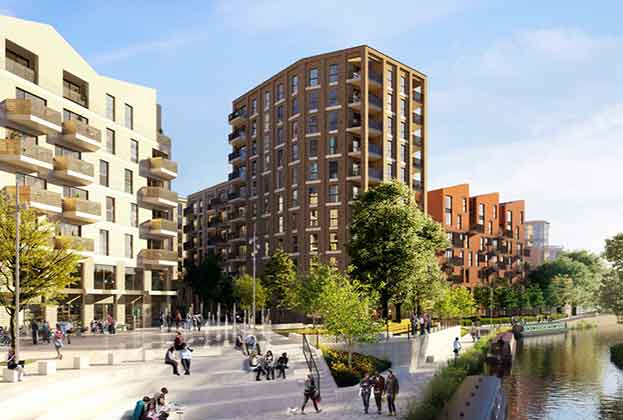Redevelopment around the station will act as a catalyst for town centre regeneration
Reading is the largest office centre in the Greater London and South East office market and has historically experienced the strongest levels of occupier demand in the region. The town has excellent transport links and has a strong provision of retail and leisure amenities, and a wide mix of residential offering, which have helped attract and retain occupiers. Reading has the highest quantum of available Grade A office space compared to other South East submarkets which has enabled the growth of the local economy.
The occupier preference in the market is for Grade A office space, evidenced by 83% of total take-up in 2022 being for best-in-class space. Reading has an established town centre and out-of-town market that have attracted different cohorts of occupiers. The out-of-town market has historically appealed to multinational technology firms, with the town centre having a more diverse range of tenants with a strong presence of financial and professional services.
Prime central office space
The most notable development in Reading town centre is Station Hill, which is located immediately adjacent to Reading train station and is a leading mixed-use development in the South East and regional office market. This mixed-use development will provide new contemporary living, working and leisure environments intertwined with open community space. One Station Hill is currently being speculatively developed by Lincoln Property Company and MGT Investment Management and comprises 276,000 sq ft of Prime Grade A office space, completing by early 2024.
This new development will help cater for the growing demand from occupiers for best-in-class office space. The scheme is expected to set a new headline record high rent for the Reading office market with a rent in excess of £40 per sq ft. This is a new rental tone we are seeing being set across the South East market, with Windsor and St Albans both achieving rents above £40 per sq ft and Maidenhead expected to surpass this level in 2023. Furthermore, occupiers are less rent sensitive with 11 submarkets achieving record-high headline rents in 2022.
New developments in Reading town centre have been able to attract new inward movers to the town, which bodes well for future take-up levels. This was exemplified by Thames Tower that completed in 2017, comprised of 185,000 sq ft, and attracted seven inward movers to Reading. Demand in the office market is becoming increasingly polarised, with schemes that can adhere to high environmental requirements and offer multiple amenities set to outperform. Station Hill can benefit from this market trend.
Aside from Station Hill, there is limited other new town centre office supply coming forward. The next office phase of Station Hill will be the next scheme likely to be speculatively developed.
The role of Build to Rent
Alongside the commercial pipeline, residential development has an important role to play in the regeneration of the town centre. The Local Plan suggests that by 2036 central Reading will accommodate around 6,400 new homes. While much of the central residential supply in the 2010s was delivered through office-to-residential conversions, the pipeline has shifted to purpose-built stock, much of which is focused on the rental market.
The residential pipeline for Reading currently totals over 8,800 units, with over half of those homes to be delivered in central Reading. 21% of the central Reading pipeline is currently under construction, with the remainder in the planning process. 1,150 homes will be delivered as purpose-built rental stock, all located in the town centre. Over 800 of these rental units are already under construction, including the scheme at Station Hill, which will provide a crucial anchor to the redevelopment of the area around the station itself.
While this will provide a significant addition to Reading’s rental stock, previous market trends suggest that there is the capacity to absorb this level of delivery. 48% of movers to Reading in 2020–2021 entered the private rental sector, and over 53% of movers aged under 30 were renters. Rents have increased by 10.2% in the year to November 2022, above the South East average of 8.9%, as demand exceeded new supply.
However, pricing will be key for future absorption. The average graduate salary in Reading is £27,000–£30,000, meaning a monthly rent of £750–£850 per person is affordable for this part of the market, while the 42% of movers to the town earning between £40,000–£60,000, can afford rents of £1,100–£1,650 pcm.
Read the articles within Spotlight: Reading – positioned for growth below.
.jpg)

